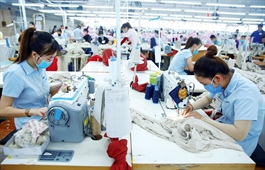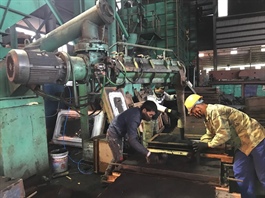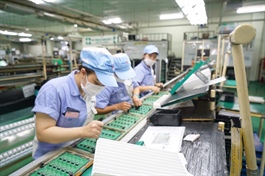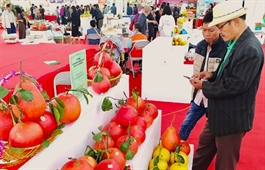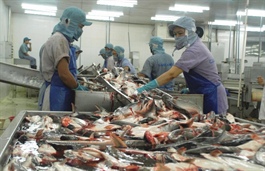Demand for Vietnamese fruit and vegetables skyrockets overseas
Demand for Vietnamese fruit and vegetables skyrockets overseas
As fruit and vegetable exports to China face difficulties, many Vietnamese enterprises have spent hundreds of millions of dollars to invest in systems and processing plants to sell their products in Europe and the US.

Nguyen Lam Vien, General Director of Vinamit Joint Stock Company, said: “China is becoming more and more strict in quality control, traceability, packaging. Their ‘Zero COVID’ policy makes it difficult for many fruit and vegetable exporters.”
“For Vinamit, with more than 20 years of experience in doing business in the market, with carefully prepared planting area and standard processing and packaging, the strict disease control affects the fulfilment progress. The European and American markets currently have great demand, creating opportunities for businesses to push into these markets.”
Nguyen Van Thu, general director of GC Food Joint Stock Company (GC Food), said: “We are determined to invest methodically from the raw material area to the processing stage to enter new markets.”
Thu added that the company invested in building a fruit and vegetable freezing factory in Dak Lak province with a total capital of about VND100 billion as the province is an area for many fruit materials such as avocado, mango, durian, which are suitable for the increasing consumption demand on the local and world markets.
According to Thu’s company, although some traditional markets face difficulties during the recovery process, other markets have great demand for agricultural products. The amount of exported processed products has doubled from 2021.
As an enterprise with many years of exporting goods to the EU, Nguyen Dinh Tung, general director of Vina T&T Joint Stock Company, said: “Vietnamese vegetables and fruits have many opportunities in the market because Viet Nam is the only country in the Asia-Pacific region to have a free trade agreement with the EU.”
“Once the Vietnam - EU Free Trade Agreement took effect, the tax rate of some Vietnamese vegetables and fruits entering the EU was reduced to 0 per cent, creating a substantial competitive advantage compared to other countries in the region.”
Tung said the EU has rigorous standards but capturing market share was not too difficult if enterprises could meet them. In the EU, Vina T&T does not face many competitors because the company has full certifications such as Global GAP, HACCP and SMETA and sales negotiations go smoothly.
Since the beginning of the year, the company’s fruit and vegetable exports to the EU have increased sharply, especially grapefruit, coconut and dragon fruit. The company is planning to expand more products into EU supermarkets.
Nguyen Thanh Binh, chairman of the Vietnam Fruit and Vegetable Association, said that the local fruit and vegetable export market is shifting, adding that for many years China has always been Viet Nam’s largest fruit and vegetable export market, accounting for 65-80 per cent of the total turnover of the industry.
However, in the first two months of the year, exports to China decreased by nearly 19 per cent from the same period last year, only reaching $260 million.
Meanwhile, vegetable and fruit exports to the US increased by almost 70 per cent, reaching $46 million; South Korea increased by nearly 32 per cent, reaching $25 million; and Japan increased by 12 per cent, reaching $23 million. Vegetable and fruit exports to Australia increased by 45.7 per cent, while the Netherlands increased by 51.5 per cent.
Binh said the market shift positively affected the fruit and vegetable industry. The US, EU, Australia, UK, Japan, and Canada were among markets evaluated with great potential.
Minister of Agriculture and Rural Development Le Minh Hoan said that Viet Nam’s advantage in free trade agreements would help fruit and vegetable exporters quickly access world markets in rapidly recovering demand.
MARD’s leader said the EU was the largest fruit and vegetable import market globally, but the amount of vegetables and fruits imported from Viet Nam only accounted for a minimal amount, less than 1 per cent.
According to MARD, the US has just officially licensed the import of many Vietnamese fruits, creating favourable conditions for enterprises to expand their exports.








